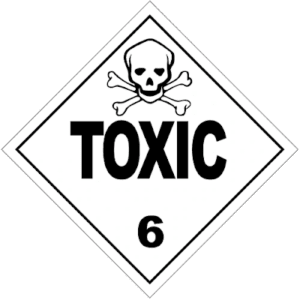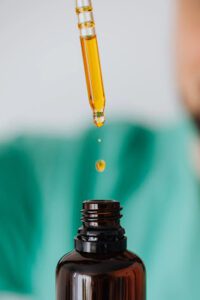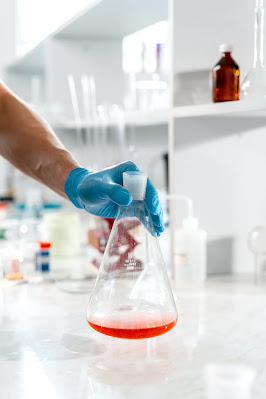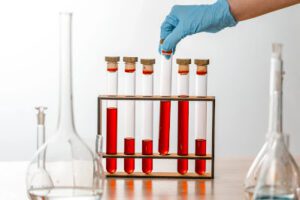
The goal of this blog post is to provide readers with a basic understanding of toxicology. We will explore how chemicals can become toxic, the potential hazards they pose to living organisms, and provide an overview of methods used to measure acute & chronic toxicity. Furthermore, we will discuss different strategies for reducing exposure to hazardous chemicals.

Guidepost to Explore
- What is Toxicology?
- Chemical Toxicity and Its Effects on Living Organisms.
- Modes of Action of Chemicals in Toxicology.
- The Importance of Chemical Hygiene Practices.
- Understanding Acute and Chronic Toxicity.
- Measuring Acute and Chronic Toxicity in Laboratory Experiments.
- The LD50 Value and Its Significance.
- The Globally Harmonized System of Classification and Labeling of Chemicals (GHS).
- LD50 Values for Common Chemicals.
- Importance of Safe Chemical Handling Practices.
- Chemical Exposure and Its Risks.
- Environmental Impact of Chemical Exposure.
- Preventing Chemical Exposure and Its Harmful Effects.
- Conclusion.
- FAQs.
What is Toxicology?
Toxicology is a scientific discipline that focuses on studying the adverse effects of chemical substances on living organisms, including humans, animals, and the environment. This field involves understanding how chemicals interact with biological systems & developing methods to detect, identify, and measure their effects.

Toxicologists examine the impact of chemicals on various organs in the body, including the liver, kidneys, & nervous system, and their potential to cause cancer or birth defects. They also investigate the different routes of exposure to chemicals, such as ingestion, inhalation, or skin absorption

Chemical Toxicity and Its Effects on Living Organisms
All chemicals can be toxic under certain conditions, but they also have conditions that are not toxic. The risk posed by a chemical depends on the method & duration of exposure. The effects of chemical exposure can range from mild irritation to severe illness or death.

Chemical toxicity can affect living organisms in several ways. For example, it can:
- Chemicals can damage DNA and cause mutations that may lead to cancer.
- They can disrupt hormone systems & cause developmental and reproductive problems.
- Chemicals can interfere with the functioning of enzymes & proteins.
- They have the potential to damage organs, such as the liver or kidneys.
- They can impair the nervous system.
- Chemicals can weaken the immune system, making organisms more vulnerable to infections & diseases.

Modes of Action of Chemicals in Toxicology
Toxicologists study the modes of action of chemicals to understand how they cause harm to living organisms. The mode of action is the sequence of events that occur between chemical exposure and the observed effect.

For example, some chemicals can cause harm by:
- Interacting with DNA and causing mutations.
- Binding to and blocking enzymes, leading to impaired functioning.
- Binding to proteins & disrupting their function.
- Causing inflammation or tissue damage.

The Importance of Chemical Hygiene Practices
To reduce the risk of harm from chemicals, it is important to follow strict chemical hygiene practices. This includes using appropriate personal protective equipment, such as gloves, lab coats, and safety goggles, as well as following specific protocols for handling & disposing of chemicals.

Chemical hygiene practices can also help prevent chemical spills, fires, and other accidents. They can also reduce the amount of chemical waste generated & minimize the risk of environmental contamination.

Understanding Acute and Chronic Toxicity
Toxicity can be divided into two main types: acute & chronic. Acute toxicity refers to the immediate effects of a single exposure to a chemical, while chronic toxicity results from repeated exposure over a prolonged period.

Acute toxicity is commonly evaluated by determining the lethal dose (LD) of a chemical, which is the amount that causes death in a specific percentage of test animals. The LD50 value indicates the dose at which 50% of the test animals die. The lower the LD50 value, the more toxic the chemical is considered to be.

On the other hand, chronic toxicity is more challenging to measure because it involves prolonged exposure to low levels of a chemical. This type of toxicity can lead to a range of health issues, such as cancer, reproductive & developmental disorders, and neurotoxicity. Chronic toxicity is typically evaluated through long-term animal studies or epidemiological studies in humans.

Measuring Acute and Chronic Toxicity in Laboratory Experiments
Toxicologists use a variety of laboratory experiments to measure the toxicity of chemicals. These include acute toxicity tests, chronic toxicity tests, and subchronic toxicity tests.

Acute toxicity tests determine the LD50 value of a chemical & its effects on different organ systems in a short period of time. Chronic toxicity tests, on the other hand, evaluate the effects of long-term exposure to low levels of a chemical. Subchronic toxicity tests assess the effects of repeated exposure to a chemical over a shorter period of time than chronic toxicity tests.

The LD50 Value and Its Significance
The LD50 value is a critical measurement in toxicology as it provides a standardized way of comparing the toxicity of different chemicals. It is used to determine the appropriate safety precautions that need to be taken when handling a chemical.

The Globally Harmonized System of Classification and Labeling of Chemicals (GHS)
The GHS is an international system for standardizing the classification & labeling of chemicals. It provides a standardized system of hazard communication that helps to ensure that the risks associated with different chemicals are clearly communicated to users.

LD50 Values for Common Chemicals
The LD50 values for common chemicals can vary widely, with some being highly toxic even in small doses, while others are relatively safe. For example, the LD50 value for caffeine is approximately 200 milligrams per kilogram of body weight, while the LD50 value for cyanide is only a few milligrams per kilogram of body weight.

Importance of Safe Chemical Handling Practices
Safe chemical handling practices are critical for minimizing the risks of chemical exposure. This includes following appropriate protocols for handling, storing, & disposing of chemicals, as well as using appropriate personal protective equipment.

Chemical Exposure and Its Risks
Chemical exposure can occur through ingestion, inhalation, or skin absorption. The risks associated with chemical exposure depend on the dose, route of exposure, & duration of exposure. In some cases, exposure to a chemical can lead to acute or chronic toxicity, while in others, it may have no apparent effect.

Environmental Impact of Chemical Exposure
Chemical exposure can also have a significant impact on the environment, including air, water, and soil pollution. It can also have harmful effects on wildlife and ecosystems, leading to biodiversity loss & ecosystem degradation.

Preventing Chemical Exposure and Its Harmful Effects
To prevent chemical exposure & its harmful effects, it is important to follow safe chemical handling practices and to be aware of the potential risks associated with different chemicals. This includes using appropriate personal protective equipment, following proper protocols for handling & disposing of chemicals & minimizing exposure through ventilation & other engineering controls.

Conclusion
Toxicology is a critical discipline that plays an important role in understanding the potential risks of chemical exposure. Through the study of the effects of chemicals on living organisms and the environment, toxicologists can help us develop safer and more sustainable practices for using & disposing of chemicals.

Chemicals can have a wide range of harmful effects, ranging from mild irritation to severe illness or even death. Both acute and chronic toxicity can cause long-term damage to the body, making it imperative to handle chemicals safely & minimize exposure.

To mitigate the risks associated with chemical handling & disposal, it is crucial to follow appropriate chemical hygiene practices, including the use of personal protective equipment and adherence to specific protocols. The Globally Harmonized System of Classification & Labeling of Chemicals (GHS) provides a standardized approach to chemical labeling, which can help prevent accidental exposure.

It is essential to recognize that the effects of chemical exposure can have a significant impact not only on human health but also on the environment. By understanding the risks associated with chemical exposure & taking appropriate precautions, we can work towards a safer & more sustainable future.

FAQs

Q: What is the definition of toxicology?
A: Toxicology is defined as the scientific study of the harmful effects of chemical substances on living organisms & the environment.
Q: What are the different types of toxicology?
A: There are several types of toxicology, including environmental toxicology, forensic toxicology, occupational toxicology, & clinical toxicology.
Q: What are the most common routes of exposure to chemicals?
A: The most common routes of exposure to chemicals are through inhalation, ingestion, & skin contact.
Q: What is acute toxicity?
A: Acute toxicity is the harmful effect that results from a single or short-term exposure to a chemical.
Q: What is chronic toxicity?
A: Chronic toxicity is the harmful effect that results from long-term or repeated exposure to a chemical.

Q: What is the LD50 value?
A: The LD50 value is a measure of acute toxicity that indicates the dose of a chemical that is lethal to 50% of test animals.
Q: What is the Globally Harmonized System (GHS)?
A: The Globally Harmonized System (GHS) is an international system for classifying & labeling chemicals to ensure their safe handling, transport, and use.
Q: What are the common symptoms of chemical exposure?
A: Common symptoms of chemical exposure can include headache, nausea, dizziness, skin irritation, & respiratory distress.
Q: What is a risk assessment in toxicology?
A: A risk assessment is a procedure utilized to assess the potential risks linked to exposure to a chemical.
Q: How can we minimize the risks of chemical exposure?
A: We can minimize the risks of chemical exposure by using appropriate personal protective equipment, following safe handling protocols, & reducing the use of harmful chemicals.

Q: What is the difference between acute and chronic toxicity?
A: Acute toxicity results from a single or short-term exposure to a chemical, while chronic toxicity results from long-term or repeated exposure to a chemical.
Q: How do toxicologists test the toxicity of chemicals?
A: Toxicologists test the toxicity of chemicals using laboratory experiments & animal testing.
Q: What is the role of toxicology in public health?
A: Toxicology plays a critical role in protecting public health by identifying potential risks associated with chemical exposure & developing strategies to minimize those risks.
Q: What is the difference between toxic and nontoxic chemicals?
A: Toxic chemicals have the potential to cause harm to living organisms, while nontoxic chemicals do not pose a significant risk.
Q: What is the primary goal of toxicology?
A: The primary goal of toxicology is to identify potential hazards associated with chemicals & develop strategies to minimize the risks associated with their use.

Q: How can we reduce our exposure to toxic chemicals in everyday life?
A: We can reduce our exposure to toxic chemicals in everyday life by using natural & non-toxic products, choosing organic foods, and avoiding exposure to environmental pollutants.
Q: What are the common sources of environmental pollution?
A: Common sources of environmental pollution include industrial activities, transportation, agriculture, and household waste.
Q: What is the role of government agencies in toxicology?
A: Government agencies play a critical role in toxicology by regulating the use of chemicals, setting safety standards, and researching the potential health effects of exposure to chemicals.
Q: What are the long-term health effects of chemical exposure?
A: Long-term health effects of chemical exposure can include cancer, reproductive and developmental problems, neurological disorders, and chronic illnesses.
Q: What is the importance of studying toxicology?
A: Studying toxicology is essential for protecting public health and the environment by identifying potential risks associated with chemical exposure & developing strategies to minimize those risks.



4 thoughts on “Toxicology: Chemical Exposure And Harmful Effects”